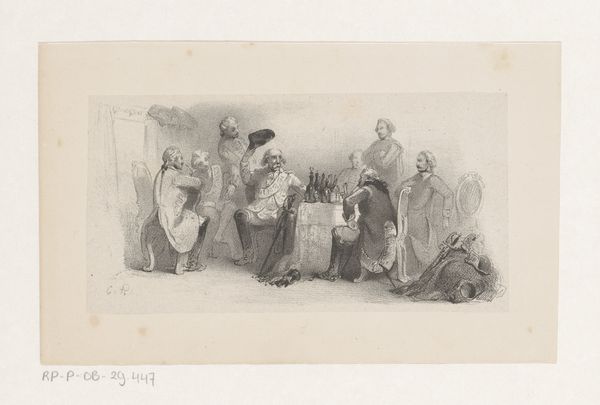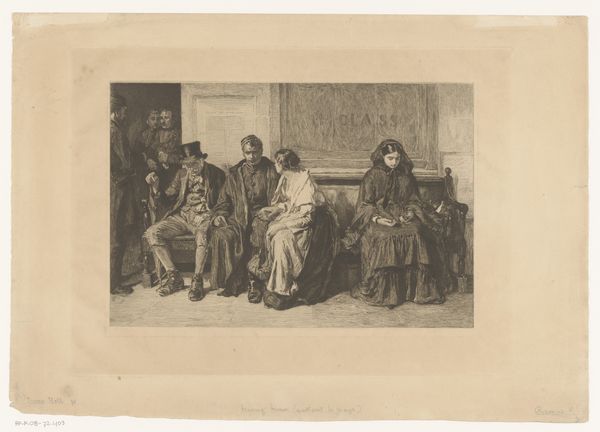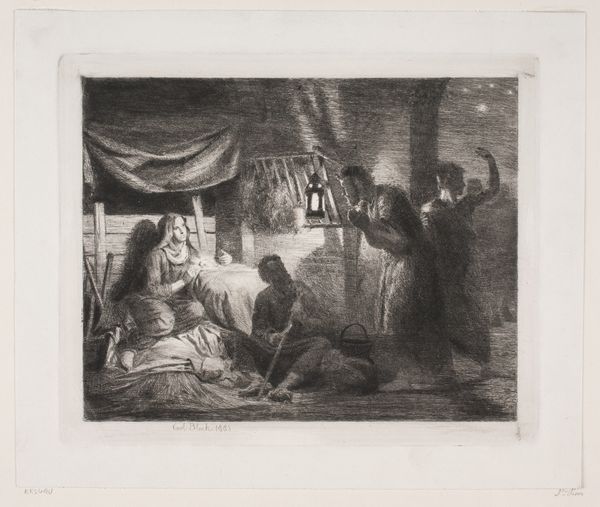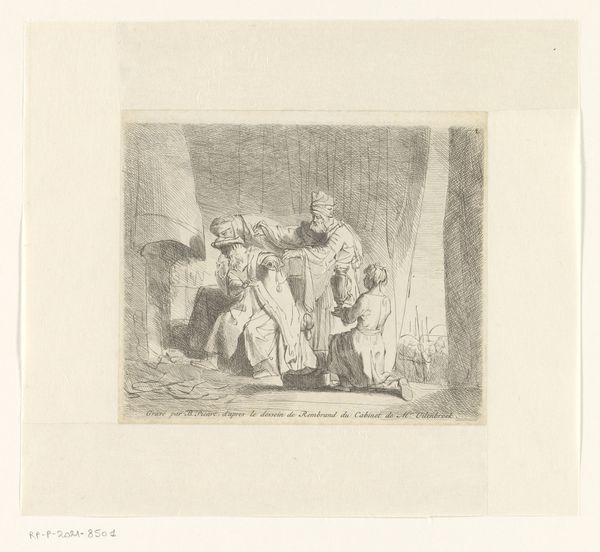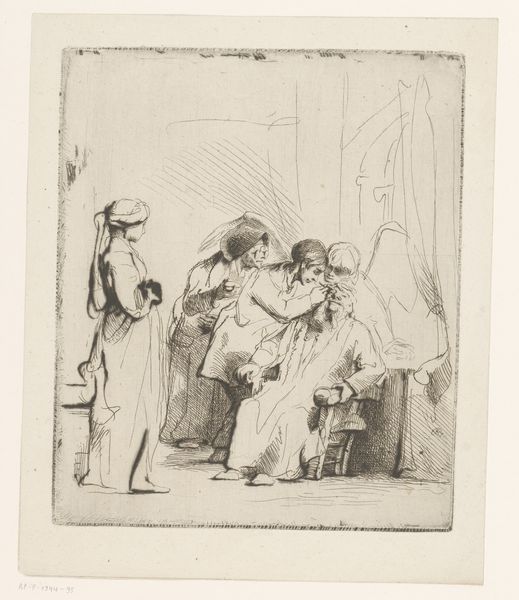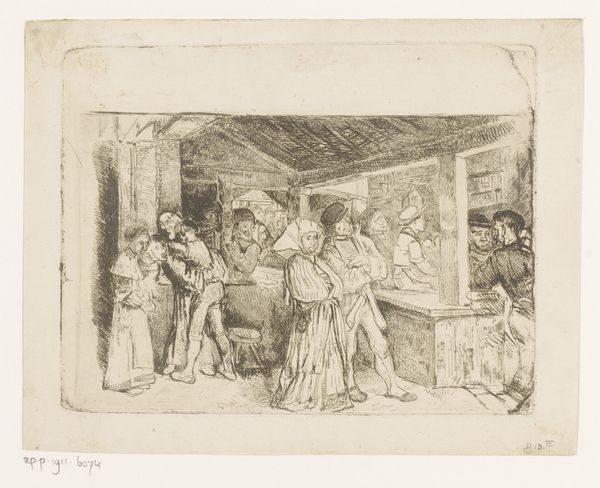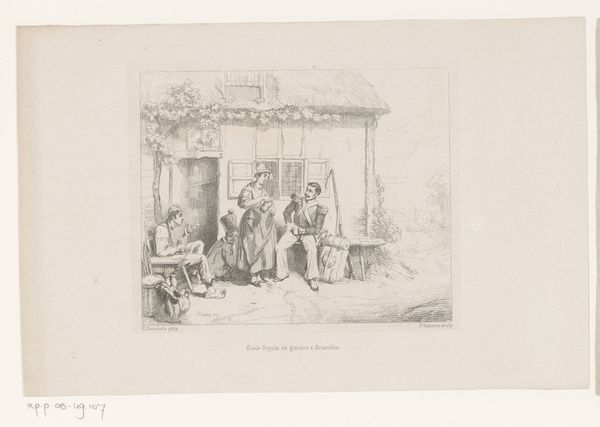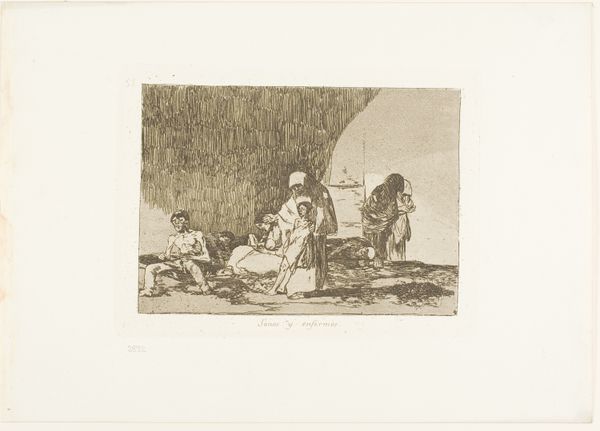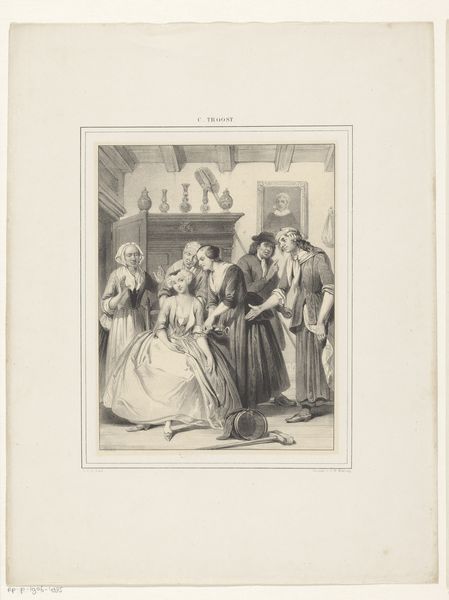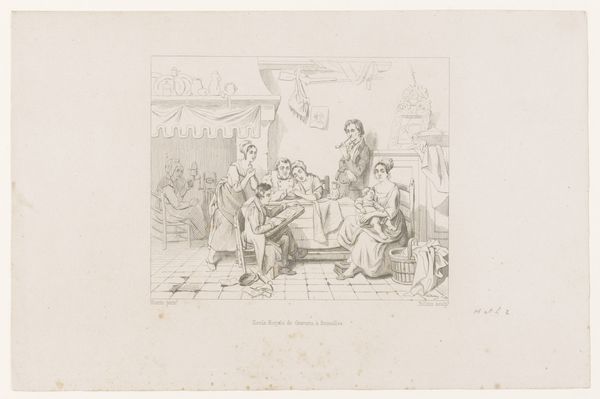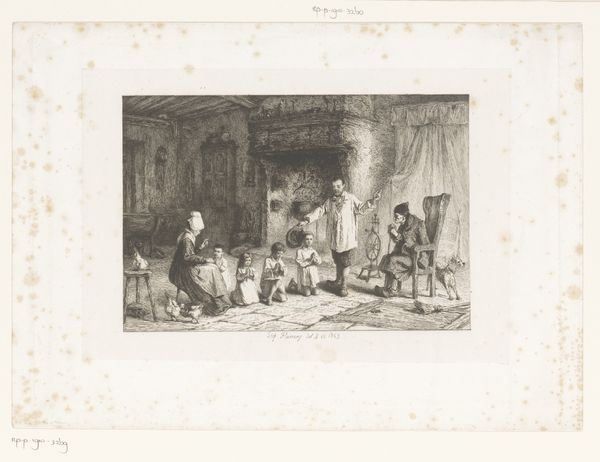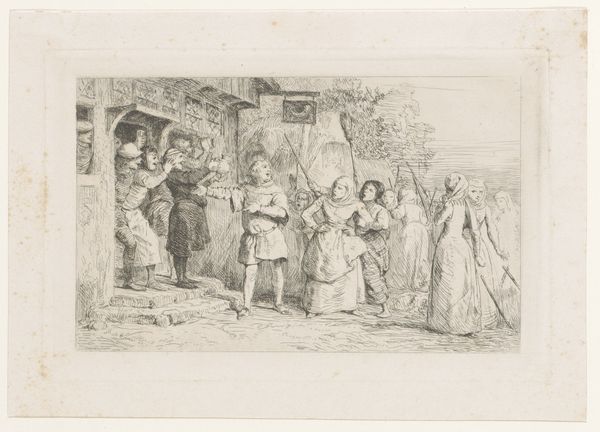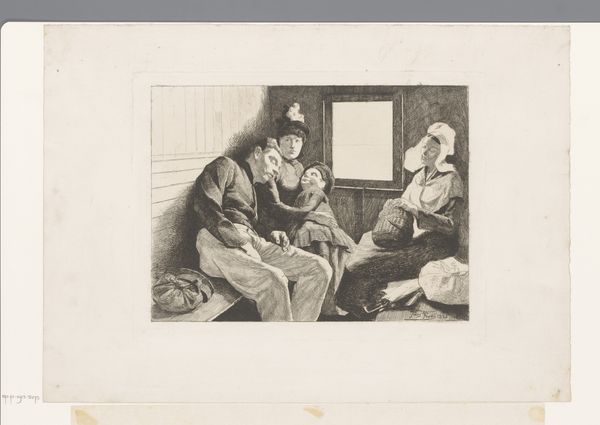
#
pencil drawn
#
toned paper
#
light pencil work
#
pencil sketch
#
personal sketchbook
#
pencil drawing
#
ink drawing experimentation
#
pen-ink sketch
#
sketchbook drawing
#
pencil work
Dimensions: height 152 mm, width 214 mm
Copyright: Rijks Museum: Open Domain
Curator: Here we have "Verkoopster van rozenkransen," or "Rosary Seller," a pencil drawing by Charles Billoin, dating from around 1850. It’s currently held in the Rijksmuseum. Editor: It possesses a delicate, almost ethereal quality, doesn't it? The subdued tones and the very fine lines give it an ephemeral feeling, like a captured moment in time. Curator: Indeed. Consider the socio-political climate of the time. Religious fervor, and its visible expressions like rosaries, were increasingly subjects of artistic and public scrutiny amidst shifts towards secularism. How does Billoin represent that tension? Editor: I'm immediately drawn to the composition itself. The grouping of figures feels deliberately arranged, guiding the eye. The use of light and shadow, despite being subtle, is incredibly effective. See how he employs a very light hand to establish tone throughout. Curator: It reflects a growing artistic interest in everyday life and the representation of the common person. Rosary beads themselves become commodities representative of this spiritual trade. Notice also the diversity of dress – Billoin isn't just documenting the physical world, but making broader commentary on social strata through detailed visual cues. Editor: Exactly, there is clear intentionality at work here. The contrasting textures achieved with so little range in tone, from the smooth faces to the intricately patterned clothing...it's a study in minimalist articulation, allowing the essential forms to dictate the narrative. Curator: And note the seller’s intense expression. She is the clear center, socially. It asks, “What role did this woman play?” Considering that the 1850s in Europe saw rising class consciousness and social upheaval, pieces like this become historical documents of not just appearance, but shifting social dynamics. Editor: Agreed. Stripped of elaborate embellishment, we are left with a distilled human scene. Billoin reduces it to formal elements—the arrangement of bodies, the direction of glances, the subtle variations in texture— to communicate an abundance of implied meaning. Curator: Viewing “Rosary Seller” is like encountering a slice of Dutch society in a state of careful observation. It moves beyond mere depiction, encouraging dialogue on its significance in culture. Editor: It truly exemplifies how minimalist formal choices can achieve depth of emotive expression. A fleeting sketch on paper, now a preserved story, skillfully expressed.
Comments
No comments
Be the first to comment and join the conversation on the ultimate creative platform.
